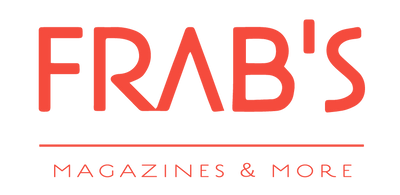NEA Magazine: a beauty dispatch
We are constantly looking for beautiful, unusual magazines, those that have all the requirements to be able to make their mark in one way or another and, when we find them, we always offer them to you with an enthusiasm that is difficult to hide.
NEA Magazine, an Italian publishing project that works "to discover the intimate link between photography and writing", is one of these because it is one of those magazines that are difficult to recognize as such, which conquer you with their charm at the very first glance, when you are still there turning around in your hands wondering if you actually bought a magazine or something else.
With an extremely (and wonderfully) ancient flavor, Nea looks like one of those files you see in detective stories, full of photos and papers held together by paper clips, much more concrete in its fragility of form than the traditional magazine.
Let's start telling you from the base: the production. Here, the production is not limited edition, it is even "on demand" and, when we ask Riccardo d'Ercole, the mind behind Nea, to print some pieces for Frab's, we have to wait a few weeks because in addition to producing the copies of the textual part, Riccardo has to go to a photographic studio, of the very rare ones that still have the good old camera obscura, to develop the photographs, strictly on Olivetti paper.
It is Riccardo himself who tells us about all the choices that hide behind a magazine with such particular features: "When we decided to go from digital to paper, the first question was: what kind of support can we give to our research, to our experiment? Manual skills and care are the essential guidelines. Making a magazine like ours, thinking about every single letter, on every single image, requires great attention to the device you want to develop. We must give the reader back the idea of what you have in your hand, what you are about to open, to read. Nea Magazine has us required this format comes out of the fascinations we have towards the cultural object. The articles that number 0 of Nea contains are experiments that are far from being concluded phenomena and circuits. They are experiments on the concept of writing and linking the word to the image to arouse disturbances of various kinds. The Dispatch it is that medium that the content required, a series of loose sheets held together by paper clips, an envelope of paper and string in the manner of the first half of the twentieth century, letters, photographs, paper and ink that run through hands and thought rather than rotary. We think contemporary readers need all of this. To touch and to release from the passive exercise of "leafing through a magazine" - without detracting from the classic magazines. The challenge we set ourselves is to build an experience that allows the reader to go through a scenario that goes beyond time. With us, the concept of typography is a very broad concept, which lends itself to different interpretations, to reasoning divorced from purely commercial reasons. For this reason, the subsequent issues will also change the formats following a logic of typographical re-appropriation that is deeply rooted in the link between content and support. We hope to succeed in the best possible way! "

Landscapes, places, people and corners of contemporary humanity are the protagonists of the magazine.
In short, NEA magazine is an extremely profound magazine of stories and photography, where the meticulous and refined use of physical elements creates a different and new dimension of the magazine and hides the need to reclaim concrete spaces to narrate a contemporary so complicated to decipher.
NEA is the encouraging and encouraging example of an extremely artisanal product that rejects craftsmanship as a lifestyle, but uses it to create meaning. Nea is definitely an example to follow.
You can buy the magazine at Frab's WHO
